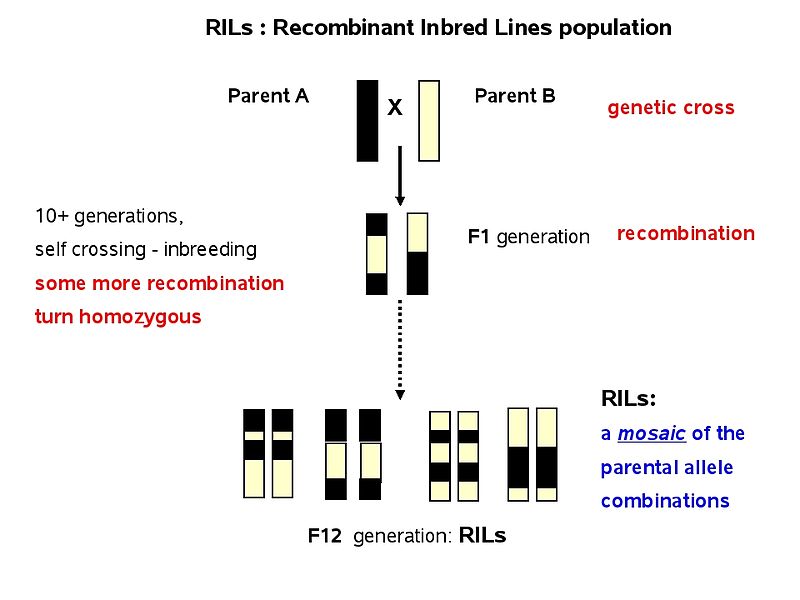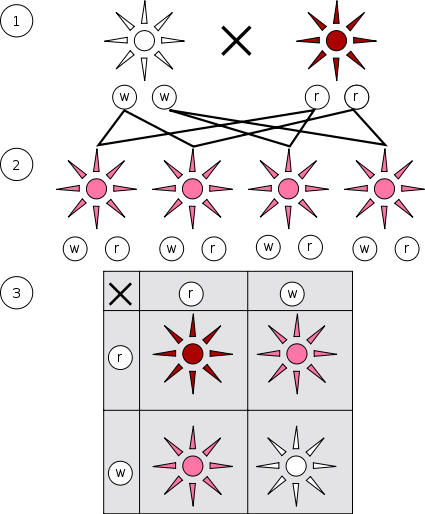Difference Between F1 and F2 Generation
Table of Contents
Key Difference – F1 vs F2 Generation
Gregor Mendel is considered as the father of genetics. His work has lead to the development of fundamental aspects of genetics. The observations and conclusions of his experiments provided evidence for the formulation of new laws and theories in the context of inheritance. Gregor Mendel conducted most of his experiments on garden pea plants. F1 and F2 are two offspring generations and each of the generations of offspring provided new evidence in respect to inheritance and natural variation that occurs within different organisms. F1 generation is produced by the breeding of two parental (P) organisms whilst F2 generation is produced by the interbreeding of two F1 generation offsprings. This is the key difference between F1 and F2 generations.
CONTENTS
1. Overview and Key Difference
2. What is F1 Generation
3. What is F2 Generation
4. Similarities Between F1 and F2 Generation
5. Side by Side Comparison – F1 vs F2 Generation in Tabular Form
6. Summary
What is F1 Generation?
F1 generation in other terms is referred to as a first filial generation offspring resulted by parental types that are distinctly different to each other. The F1 generation contains characteristics of both parents with a distinctly unique genotype and a uniform phenotype. In modern-day genetics, F1 hybrids are utilized at a higher scale. The foundation for modern-day genetics was laid by Gregor Mendel through his discoveries that involved F1 and F2 generations. During his experiments, Gregor Mendel mainly focused on the fact that involved the patterns of inheritance and the basis for the occurrence of variation in the context of genetics. Mendel conducted a cross-pollination experiment with the involvement of two homozygous or true breeding parents. Upon completion of his experiment, Mendel observed that the resulted F1 generation is consistent and heterozygous and demonstrated characteristics of the parents that were genetically dominant. Therefore, the offspring possessed a different but a combination of phenotypes of the dominant alleles of the parents.

Figure 01: F1 generation
In modern genetics, F1 hybrids provide both advantages and disadvantages. As advantages, the genes of offspring of F1 generations contain limited variations with homozygous pure lines. This results in a uniform phenotype. So identification of the properties of the first cross and repeating the same procedure will provide exact results. Therefore, an offspring with required similar characteristics could be obtained by F1 generation. But the utilization of F1 generation as parents and the resulted F2 generation will be highly varied from each other. Therefore, the continuation of the process would not yield the exact same results.
What is F2 Generation?
F2 generation is referred to as second filial generation of offspring. A F2 generation is developed as a result of cross-breeding of two F1 generation offspring together. The F2 generation differs from F1 generation by the fact that F2 generation offsprings are significantly different to each other by genotypically and phenotypically when compared with F1 generation offsprings. Gregor Mendel performed a test cross during his experiments on garden pea plant. A test cross is performed with the intention of determining a pattern of the genotype that mainly based on the phenotype of the offspring that is resulted from the test cross.
Gregor Mendel was the first scientist to perform a test cross in genetics. During his experimental procedure, he produced an F1 generation of flowers of the garden pea plant, which are purple flowers. Mendel then allowed the cross mating of an F1 generation together. This resulted in the production of either purple or white flowers.

Figure 02: F2 generation
Mendel performed this experiment for a number of times and based on the results; it was confirmed that a ratio could be formulated according to the phenotype of the F2 generation that is 3:1. In this example, the colour of the flower of the garden pea plant, according to the ratio developed, there will be a white flower bearing plant to every three purple flower-bearing plants. This has lead to the development of other two genetical fundamental principles namely law of independent assortment and law of segregation.
What are the Similarities Between F1 and F2 Generation?
- Both generations are resulted due to the breeding of two organisms of the same species.
- Both generations are offspring generations.
What is the Difference Between F1 and F2 Generation?
F1 vs F2 Generation | |
| F1 generation is the generation of offspring resulted from the parental (P) generation when they interbreed. | F2 generation is an offspring generation resulted from the cross mating of F1 generation. |
Summary – F1 vs F2 Generation
F1 generation is also known as the first filial generation of offspring is resulted in the crossing of two parental types that are distinctly different to each other. Upon completion of his experiment, Mendel observed that the resulted F1 generation is consistent and heterozygous and demonstrated characteristics of the parents that were genetically dominant. F2 generation is referred to as a second filial generation of offspring. F2 generation is developed as a result of cross-breeding of two F1 generation offspring together. Based on the results, it was confirmed that a ratio could be formulated according to the phenotype of the F2 generation that is 3:1. This is the difference between F1 and F2 generation.
Download the PDF of F1 vs F2 Generation
You can download the PDF version of this article and use it for offline purposes as per citation note. Please download the PDF version here: Difference Between F1 and F2 Generation
Reference:
1. MENDELS EXPERIMENTS. Available here
2.“Second filial generation.” Biology Online. Available here
3. Phenix, Sarah. “What Is the F2 Generation? – Definition & Characteristics.” Study.com. Available here
4. “F1 Generation – Definition and Examples.” Biology Dictionary, 21 Jan. 2018. Available here
Image Courtesy:
1.’RILs population construction”By Agbiotec – Own work, (CC BY-SA 3.0) via Commons Wikimedia
2.’Mendelian inheritance intermed’By Benutzer:Magnus Manske (CC BY-SA 3.0) via Commons Wikimedia
ncG1vNJzZmivp6x7pbXFn5yrnZ6YsqOx07CcnqZemLyue8OinZ%2Bdopq7pLGMm5ytr5Wau26ykGaYp5xdq8BuspFmnp6mlaeutbXOp2Y%3D